Description
Ordering Information
| Best Value Full System Kit | Includes three wavelengths (UV + VI + RB) |
| Single wavelength full systems | Available in non-UV or UV wavelengths |
| Add-on single wavelengths | Available in non-UV or UV wavelengths |
Fluorescence solutions
The key elements of any fluorescence system are:
– a light source that produces sufficient energy in the appropriate wavelength range to excite fluorescence in the sample of interest;
– a barrier filter in the viewing path that blocks reflected excitation light while transmitting the fluorescence emitted by the sample.
NIGHTSEA implements these for the Hirox microscope with:
– high intensity LED light sources available in five excitation wavelength ranges (see list further down page);
– emission barrier filters that can be added to the Keyence lenses easily and non-invasively.
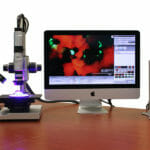 |
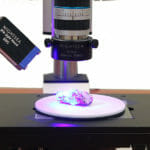 |
| Hirox microscope with NIGHTSEA fluorescence adapter | Detail of NIGHTSEA light head and barrier filter with Hirox microscope |
Here is a sample of what you can see. For many more examples visit our Hirox image gallery.
Comprehensive solution kit
We have configured a versatile Hirox fluorescence adapter kit (part number SFA-K-IND) that includes the most useful excitation wavelengths for varied industry applications. The SFA-H-IND kit includes the following items, at a package price that is significantly less than purchasing the items separately:
– Three excitation light heads – Ultraviolet (UV), Violet (VI), and Royal Blue (RB) . This recommendation is based on our experience with varied applications. Read the explanation below.
– Three barrier filters paired to the excitation light heads
– Matching barrier filter glasses for each excitation wavelength
– Gooseneck lamp base with dimming control
– Universal power supply – 120/240VAC, 50/60Hz, with international plug set
– Packing/carrying case with custom-cut foam
We do offer additional wavelength sets that may be of use for other applications.
Why we recommend a set of three excitation wavelengths for industry needs
We have found that the combination of the Ultraviolet, Violet, and Royal Blue excitation/emission sets addresses a wide variety of industrial imaging challenges. The most common misconception we encounter is that fluorescence is uniquely associated with ultraviolet (UV) light and many customers immediately ask for that wavelength. However we have found in several cases – even some in which UV was specifically recommended by a dye manufacturer – that either Violet or Royal Blue provided superior performance. For example:
– A prospective customer wanted to image concrete thin sections impregnated with fluorescent dye. The dye supplier recommended UV, and it is true that UV will make the dye fluoresce nicely. We found that our Royal Blue excitation produced significantly brighter fluorescence.
– Similar to above, except that a fluorescence epoxy had been used to highlight surface cracks in a test sample. Royal Blue excitation yielded brighter fluorescence.
– A prospective customer sent us a sample of material that was known to fluoresce under UV. The goal was to see the distribution of non-fluorescent particles in a fluorescent matrix. While both UV and Royal Blue excited fluorescence in the sample, the best imaging contrast was achieved with Violet excitation.
Acquiring the three-color system will provide the highest chance of success and will equip you with a versatile toolkit to address new fluorescence imaging challenges as they arise.
Wavelength sets
There are five excitation/emission wavelength combinations available for the system.
| Color | Designation | Excitation | Emission |
| Ultraviolet | UV | 360 – 380nm | 415nm longpass |
| Violet | VI | 400 – 415nm | 450nm longpass |
| Royal Blue | RB | 440 – 460nm | 500nm longpass |
| Cyan | CY | 490 – 515nm | 550nm longpass |
| Green | GR | 510 – 540nm | 600nm longpass |
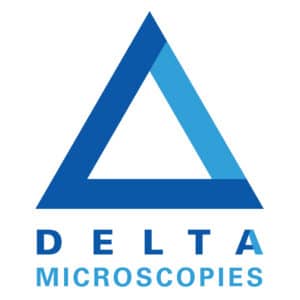
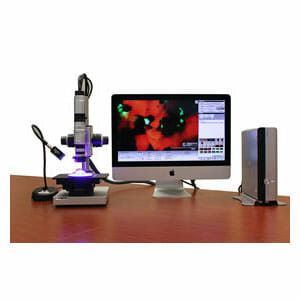
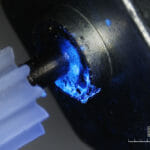
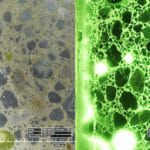
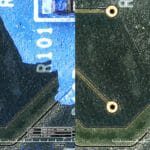
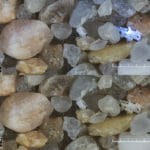
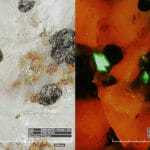
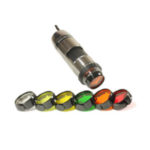
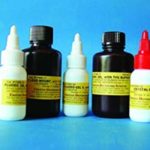
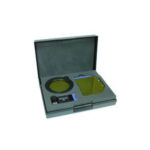
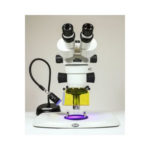
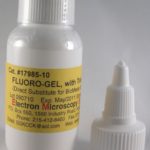
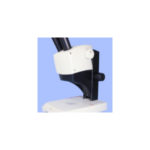

Reviews
There are no reviews yet.